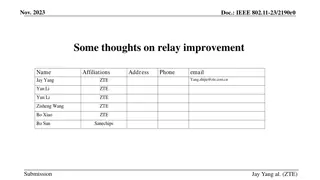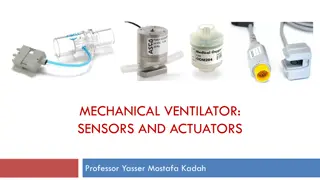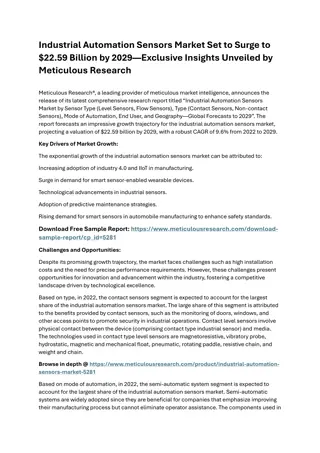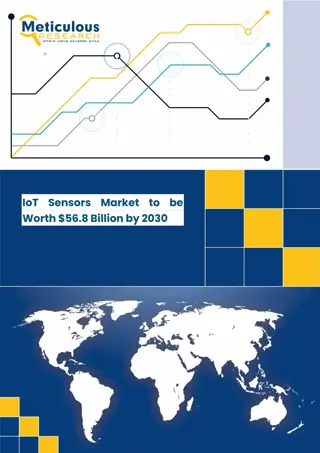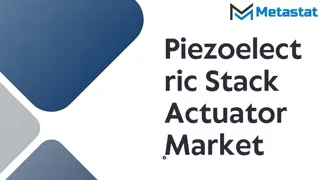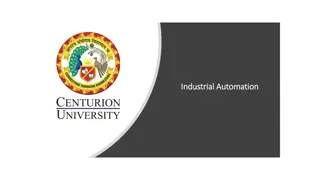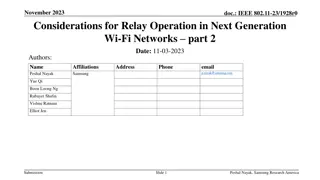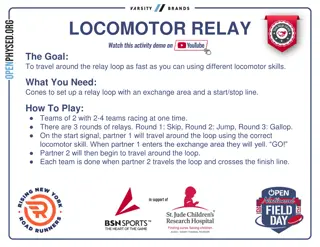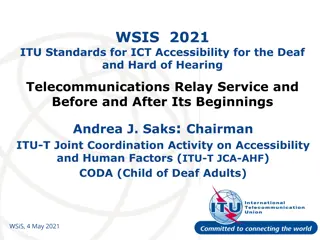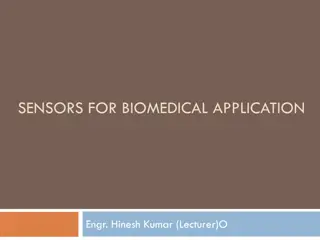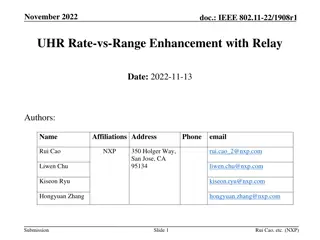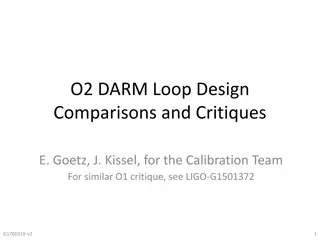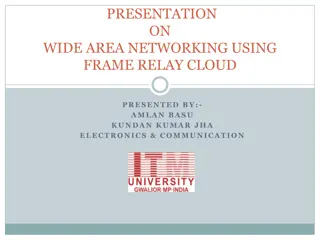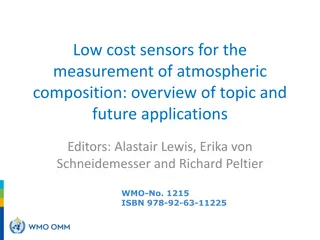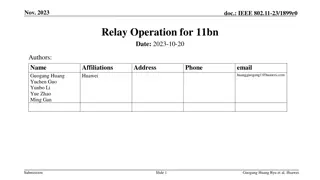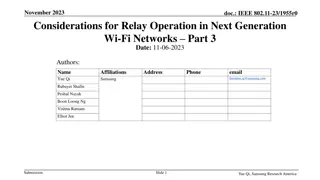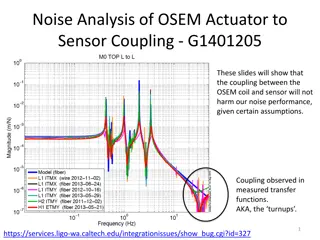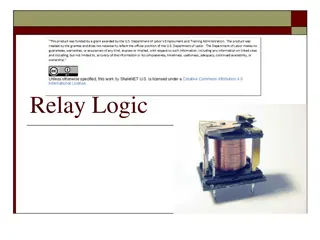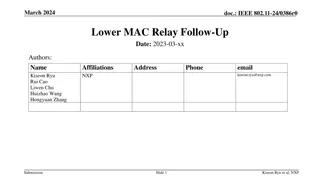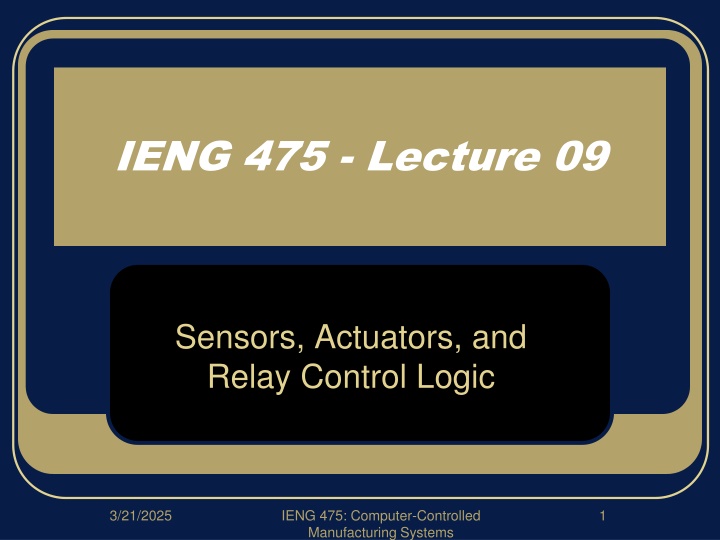
Sensors, Actuators, and Relay Control Logic in Computer-Controlled Manufacturing Systems
Explore the fundamentals of sensors, transducers, and analyzers in the context of computer-controlled manufacturing systems. Learn about different classes and types of sensors, along with examples of sensors and transducers used in industrial applications. Discover key considerations like noise immunity and validity in sensor technology for effective decision-making.
Download Presentation

Please find below an Image/Link to download the presentation.
The content on the website is provided AS IS for your information and personal use only. It may not be sold, licensed, or shared on other websites without obtaining consent from the author. If you encounter any issues during the download, it is possible that the publisher has removed the file from their server.
You are allowed to download the files provided on this website for personal or commercial use, subject to the condition that they are used lawfully. All files are the property of their respective owners.
The content on the website is provided AS IS for your information and personal use only. It may not be sold, licensed, or shared on other websites without obtaining consent from the author.
E N D
Presentation Transcript
IENG 475 - Lecture 09 Sensors, Actuators, and Relay Control Logic 3/21/2025 IENG 475: Computer-Controlled Manufacturing Systems 1
Assignment Reading & Assignment Obtain ISO Fluid Logic Notes handout from Materials Page before next class 3/21/2025 2 IENG 475: Computer-Controlled Manufacturing Systems
Definitions Sensor: a device that allows the measurement of some physical quantity of interest. Transducer: a device that converts one physical quantity into another (more useful) physical quantity. Analyzer: a device that compares two or more quantities to provide information for decision making. We tend to refer to all of these as sensors. 3/21/2025 3 IENG 475: Computer-Controlled Manufacturing Systems
Classes & Types of Sensors Four major classes of sensors: Tactile Proximity & Range Vision Miscellaneous (contact - limit switches) (non-contact) (recognition, orientation) (temp, pressure, strain) Two types of sensors: Analog Digital (continuous physical quantity) (discrete physical quantity) 3/21/2025 4 IENG 475: Computer-Controlled Manufacturing Systems
Examples Velocity Tachometer Analog Position Limit switches ac/dc current location Potentiometers dc voltage angular / linear Resolvers ac voltage phase shift angular Encoders ac/dc current angular / linear location Incremental / Absolute dc voltage angular velocity Digital pulse frequency angular / linear velocity Temperature Capacitive Resistive Thermistors Pressure Piezo-electric Resistive 3/21/2025 5 IENG 475: Computer-Controlled Manufacturing Systems
Examples Transducers ADCs - Analyzers Counters Timers Computers Ultra-Sonics Radar distance frequency shift Vision Systems Analog to Digital Converters DACs - Digital to Analog Converters Frequency to Voltage Converters Voltage to Frequency Converters 3/21/2025 6 IENG 475: Computer-Controlled Manufacturing Systems
Considerations Noise Immunity: the ability to discriminate the desired quantity from the background signals. Validity: the surrogate quantity s ability to represent the desired, physical quantity. Shielding: preventing false responses from entering the measurement system. 3/21/2025 7 IENG 475: Computer-Controlled Manufacturing Systems
Considerations Noise Immunity (continued): Hysteresis: the quantity of signal required to trigger an increase in measured value is greater than that required to trigger a decrease in measured value. On Off Threshold On Threshold Off Hysteresis 0 1 2 3 4 5 Voltage 3/21/2025 8 IENG 475: Computer-Controlled Manufacturing Systems
Considerations Response Time: the time between when a measurable change occurs and when the change in quantity is detected. Calibration: establishing the relationship between the measured physical variable (input) and the quantified response signal (output). 3/21/2025 9 IENG 475: Computer-Controlled Manufacturing Systems
Measures Resolution: the smallest change in the quantity that can be detected. Mill Example: How close can I position the center of the tool to a point in the work envelope? Repeatability: the ability to consistently obtain the same quantification. Mill Example: Can I consistently return to a previously visited point? Accuracy: the ability to obtain the true, desired quantification. Mill Example: If I tell it to go to a point in the work envelope, will it go where I told it to? 3/21/2025 10 IENG 475: Computer-Controlled Manufacturing Systems
Actuators Linear Action: Stroke Length Cylinders: Hydraulic High force Low to medium speed Leaks, noise, bulk, cost Pneumatic Medium force (100 psi, typical) High speed Noise; intermediate mess, bulk & cost Solenoids (Electromagnetic): Low force Medium speed Quiet, clean, small, cheap Linear Slides (Electro-mechanical): Medium Force Low to medium speed Quiet, clean, medium size & cost (1000 psi, typical) (< 10 lbf, typical) (50 400 lbf, typical) 3/21/2025 11 IENG 475: Computer-Controlled Manufacturing Systems
Rotary Actuators (Drives) Rotary Action (may be converted to linear): Motors Hydraulic (rotary vanes) High power Low to medium speed, medium precision Leaks, noise, bulk, cost Pneumatic (rotary vanes) Medium power High speed, low precision Noise; intermediate mess, bulk & cost Electric Low power Medium speed, high precision Quiet, clean, small, cheap 3/21/2025 12 IENG 475: Computer-Controlled Manufacturing Systems
Electric Motors Stepper Motors DC pulses result in fixed angular motion Pairs of coils activated Lower speed (to avoid ringing) Lower power & holding torque 3/21/2025 13 IENG 475: Computer-Controlled Manufacturing Systems
Electric Motors Servo Motors Require feedback to operate (tachometer) AC speed controlled by the frequency of the power supplied to the motor more powerful DC speed controlled by the magnitude of the voltage supplied to the motor holding torque + Velocity In Feedback Diff. Amp. Shaft Tachometer Motor 3/21/2025 14 IENG 475: Computer-Controlled Manufacturing Systems
Control Loops Open Loop: Distance from position to endpoint is used to compute axis motions, control signals are sent to axis drives, and at the end of the motion time, it is assumed that the desired position has been reached. Closed Loop: Distance from position to endpoint is used to compute axis motions, control signals are sent to axis drives, and the error between the desired and the attained position is fed back to the control system until the error tolerance has been reached. 3/21/2025 15 IENG 475: Computer-Controlled Manufacturing Systems
Motion Control Hard Automation Mechanical Cams: Shape of the cam determines motion of the follower Reprogrammed by changing out the cams Examples: Automatic screw machines, gun stocks Follower Cam 3/21/2025 17 IENG 475: Computer-Controlled Manufacturing Systems
Motion Control Hard Automation Mechanical Cams: Shape of the cam determines motion of the follower Reprogrammed by changing out the cams Examples: Automatic screw machines, gun stocks Follower Cam 3/21/2025 18 IENG 475: Computer-Controlled Manufacturing Systems
Motion Control Hard Automation Mechanical Cams: Shape of the cam determines motion of the follower Reprogrammed by changing out the cams Examples: Automatic screw machines, gun stocks Follower Cam 3/21/2025 19 IENG 475: Computer-Controlled Manufacturing Systems
Motion Control Hard Automation Mechanical Cams: Shape of the cam determines motion of the follower Reprogrammed by changing out the cams Examples: Automatic screw machines, gun stocks Follower Cam 3/21/2025 20 IENG 475: Computer-Controlled Manufacturing Systems
Motion Control Hard Automation Mechanical Cams: Shape of the cam determines motion of the follower Reprogrammed by changing out the cams Examples: Automatic screw machines, gun stocks Follower Cam Mechanical Stops: Range of motion is limited by stops Reprogrammed by changing the position of the stops Examples: Pneumatic bang-bang robots Cylinder Stops Piston 3/21/2025 21 IENG 475: Computer-Controlled Manufacturing Systems
Motion Control Hard Automation Mechanical Cams: Shape of the cam determines motion of the follower Reprogrammed by changing out the cams Examples: Automatic screw machines, gun stocks Follower Cam Mechanical Stops: Range of motion is limited by stops Reprogrammed by changing the position of the stops Examples: Pneumatic bang-bang robots Cylinder Piston Stops 3/21/2025 22 IENG 475: Computer-Controlled Manufacturing Systems
Motion Control Hard Automation Mechanical Cams: Shape of the cam determines motion of the follower Reprogrammed by changing out the cams Examples: Automatic screw machines, gun stocks Follower Cam Mechanical Stops: Range of motion is limited by stops Reprogrammed by changing the position of the stops Examples: Pneumatic bang-bang robots Cylinder Stops Piston 3/21/2025 23 IENG 475: Computer-Controlled Manufacturing Systems
Motion Control Point to Point Starting and ending points are given, but the path between them is not controlled Advantage: simple, inexpensive controller Example: Peck drilling 3/21/2025 24 IENG 475: Computer-Controlled Manufacturing Systems
Motion Control Continuous Path Both endpoints and the path between them are controlled Advantage: complex shape capability Example: NC contouring 3/21/2025 25 IENG 475: Computer-Controlled Manufacturing Systems
Interpolation Y Linear: b y(t) a X x(t) 1. Find the axis motion times: divide each axis displacement by the max drive rate for that axis. 2. Find the max motion time of all the axis motion times. 3. For each axis, divide the axis motion time by the max motion time to find the operating % for that axis motor. 3/21/2025 26 IENG 475: Computer-Controlled Manufacturing Systems
Interpolation Y Circular: b y(t) r a c X x(t) Approximated by linear interpolation chords. Approximation determined by one out of three tolerances: Inner Tolerance, Outer Tolerance, or Total Tolerance. 3/21/2025 27 IENG 475: Computer-Controlled Manufacturing Systems
Interpolation Inner Tolerance: Chords are located inside the arc 3/21/2025 28 IENG 475: Computer-Controlled Manufacturing Systems
Interpolation Outer Tolerance: Chords are located outside the arc 3/21/2025 29 IENG 475: Computer-Controlled Manufacturing Systems
Interpolation Total Tolerance: Inner and Outer tolerances are equal 3/21/2025 30 IENG 475: Computer-Controlled Manufacturing Systems

